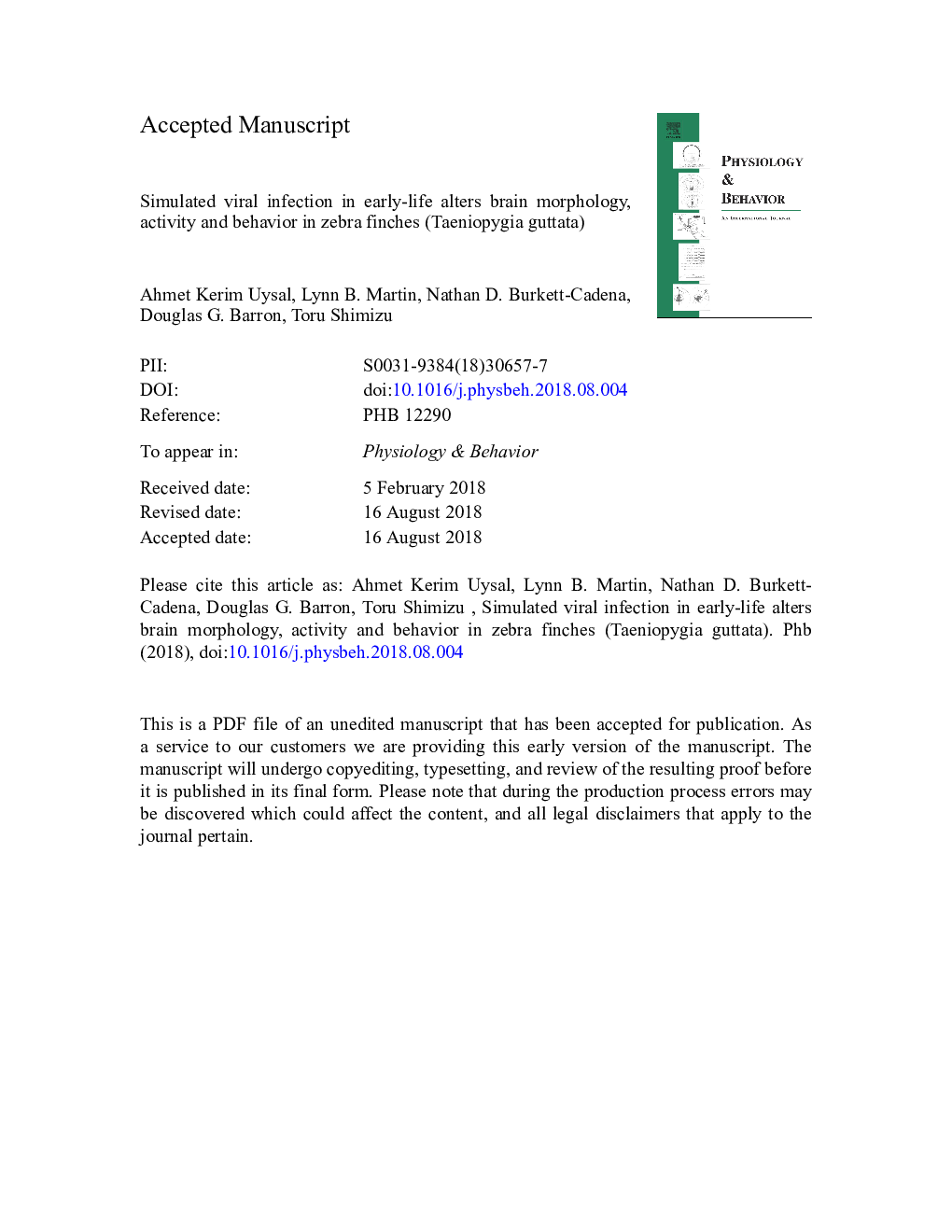| کد مقاله | کد نشریه | سال انتشار | مقاله انگلیسی | نسخه تمام متن |
|---|---|---|---|---|
| 8956936 | 1646184 | 2018 | 47 صفحه PDF | دانلود رایگان |
عنوان انگلیسی مقاله ISI
Simulated viral infection in early-life alters brain morphology, activity and behavior in zebra finches (Taeniopygia guttata)
دانلود مقاله + سفارش ترجمه
دانلود مقاله ISI انگلیسی
رایگان برای ایرانیان
کلمات کلیدی
موضوعات مرتبط
علوم زیستی و بیوفناوری
بیوشیمی، ژنتیک و زیست شناسی مولکولی
فیزیولوژی
پیش نمایش صفحه اول مقاله

چکیده انگلیسی
Early-life immune challenges (ELIC) have long-term effects on adult behavior and brain development. ELIC studies on birds are still few, but they are epidemiologically crucial since birds are important hosts of many mosquito-borne viruses. In this study, we administered a viral infection mimicking agent, Polyinosinic: polycytidylic acid (Poly I:C), to nestling zebra finches on post-hatch day 14. When birds became sexually mature, their general activity (i.e., hopping, feeding behavior) and mosquito defense behaviors (i.e., hops, head movements, pecks, wing movements, foot movements, and scratches) were measured. Following behavioral trials, brains of male birds were collected for anatomical and histochemical analyses. Poly I:C challenge had sex-dependent effects on general activity and mosquito defense behaviors. When compared to control females, Poly I:C challenged females hopped and fed less often in their general activities, but hopped more often in the presence of mosquitoes. Poly I:C challenged males did not differ from control males in any behaviors. Brain analysis revealed that the nucleus taeniae of the amygdala (TnA) of Poly I:C challenged males were smaller in volume yet had more neurons expressing immediate-early gene proteins compared with controls, suggesting a more active TnA. These results suggest that immune challenges early in the life could have long-term effects on behaviors and brains of zebra finches, which may influence disease spread and fitness of individual birds.
ناشر
Database: Elsevier - ScienceDirect (ساینس دایرکت)
Journal: Physiology & Behavior - Volume 196, 1 November 2018, Pages 36-46
Journal: Physiology & Behavior - Volume 196, 1 November 2018, Pages 36-46
نویسندگان
Ahmet Kerim Uysal, Lynn B. Martin, Nathan D. Burkett-Cadena, Douglas G. Barron, Toru Shimizu,